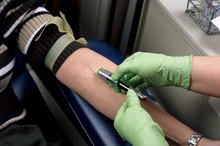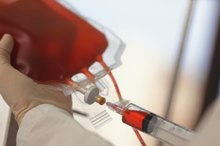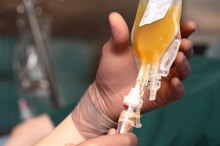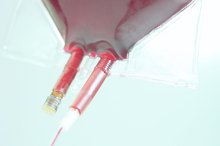What does fact checked mean?
At Healthfully, we strive to deliver objective content that is accurate and up-to-date. Our team periodically reviews articles in order to ensure content quality. The sources cited below consist of evidence from peer-reviewed journals, prominent medical organizations, academic associations, and government data.
- NCBI: Adverse reactions during voluntary donation of blood and/or blood components. A statistical-epidemiological study
- NCBI: Adverse reactions during voluntary donation of blood and/or blood components. A statistical-epidemiological study
The information contained on this site is for informational purposes only, and should not be used as a substitute for the advice of a professional health care provider. Please check with the appropriate physician regarding health questions and concerns. Although we strive to deliver accurate and up-to-date information, no guarantee to that effect is made.
Disadvantages to Donating Plasma
Many people donate plasma in an attempt to help others and even as a way to earn extra money, as many plasma donation centers pay for donations. Hospitals and other medical centers need plasma, which is a clear liquid that is separated from a blood donation, to treat a variety of conditions, from genetic diseases to burns and shock. While a person who donates plasma often has no adverse effects, it can result in a few disadvantages that a person considering donation should weigh.
Pain
One of the most obvious disadvantages to donating plasma is pain. You should expect some stinging and pressure where the needle is inserted into your arm. When you are donating direct plasma, the needle stays inside your arm longer than when you are simply donating blood. That's because after the technician removes the blood from your body, he separates plasma and returns the remaining blood to you. As a result, your arm may be sore after you donate, and you may have a bruise at the site of the needle for a few days.
- One of the most obvious disadvantages to donating plasma is pain.
- When you are donating direct plasma, the needle stays inside your arm longer than when you are simply donating blood.
Adverse Physical Reactions
About Nerve Damage Due to Donating Blood
Learn More
Donating plasma can also have other adverse physical reactions 1.** For example, if you have a dislike of needles or blood, you may become nervous, sweaty, pale and dizzy when you see the needle go in your vein or someone else's vein. Some people who have extreme discomfort in the presence of blood could lose consciousness, but that is extremely rare.
Calcium Loss
Sometimes, plasma donation centers use an anti-coagulant when they take a plasma donation. That can result in a loss of calcium in the blood. When the calcium ions in your blood become too low, you may start to feel cold, have tingling in your fingers and feel light-headed or nauseous. This is less likely if you have eaten within a couple hours of giving plasma. You can quickly alleviate it by eating a cookie or drinking a cup of orange juice.
- Sometimes, plasma donation centers use an anti-coagulant when they take a plasma donation.
- This is less likely if you have eaten within a couple hours of giving plasma.
Time Commitment
Pros & Cons of Giving Blood
Learn More
Donating plasma can be a lengthy endeavor, especially your first time. At many centers, you will have to undergo a complete physical and blood work to make sure that you are healthy enough to donate and that your plasma will be useful. You often have to fill out a long questionnaire as well, with questions about your general health, where you have traveled, sexual history and other questions. The donation itself also can take quite a while, up to an hour.
- Donating plasma can be a lengthy endeavor, especially your first time.
- You often have to fill out a long questionnaire as well, with questions about your general health, where you have traveled, sexual history and other questions.
Related Articles
References
- NCBI: Adverse reactions during voluntary donation of blood and/or blood components. A statistical-epidemiological study
- Uche E, Adediran A, Damulak O, Adeyemo T, Akinbami A, Akanmu A. Lipid profile of regular blood donors. J Blood Med. 2013;4:39-42. doi:10.2147/JBM.S42211
- Van jaarsveld H, Pool GF. Beneficial effects of blood donation on high density lipoprotein concentration and the oxidative potential of low density lipoprotein. Atherosclerosis. 2002;161(2):395-402. doi:10.1016/S0021-9150(01)00638-4
- Meyers DG, Strickland D, Maloley PA, Seburg JK, Wilson JE, Mcmanus BF. Possible association of a reduction in cardiovascular events with blood donation. Heart. 1997;78(2):188-93. doi:10.1136/hrt.78.2.188









